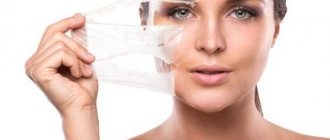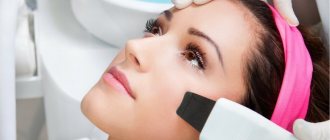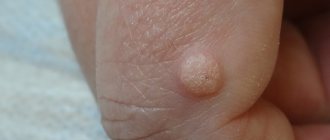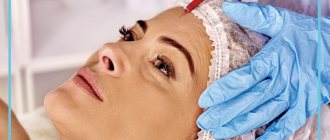- Buy the best post-peeling cream
- Who needs peeling and why?
- Skin after peeling
- Myths about post-peeling care
- Rules of care before and after peeling
- The best post-peeling cream: a review of products with active ingredients
Peeling is a procedure of exfoliation, that is, exfoliation of the skin .
You can do it in a salon from a professional cosmetologist, buy an acid peel, or even do an exfoliating procedure at home using improvised means.
But the result is not always pleasant: the skin turns red, itches, flakes, and rashes appear . Why is this happening? How to avoid negative consequences?
We find out what you can and cannot do before and after peeling, and also understand the intricacies of skin care. Review of the best products for restoring skin after peeling.
Buy the best post-peeling cream
On the DAVIANI Shop you can buy the best after-peeling product.
To do this, in the Product Catalog, select “Face” -> “Facial Care” . On this page, select the necessary filters: “Restoration”, “Regeneration”, “Moisturizing”, “Relieves irritation” and “Soothes the skin” .
More than 150 products from famous brands for your choice: Ultraceuticals SPF cream, Thalion products, RHEA mask and other products with proven effectiveness.
Who needs peeling and why?
Exfoliation helps cleanse and renew the skin by exfoliating it. The procedure activates tissue regeneration and stimulates blood microcirculation. Peeling will help make the skin smooth and elastic, rejuvenate it, restore healthy radiance and freshness.
Depending on the nature of the impact, peelings are divided into
- Physical
– performed using abrasives, i.e. exfoliating particles. - Chemical
- performed using exfoliating agents. They often contain fruit acids. - Hardware
- performed using ultrasound or laser.
There are several types of peeling according to the level of impact: superficial, medium and deep . Superficial peeling affects the epidermis, while medium and deep peeling reaches the dermis.
Superficial peels are suitable for periodic skin renewal, but medium and deep peels can be used to solve cosmetic problems.
According to the principle of action, any peeling is a controlled damage to the skin when you destroy tissue at an acceptable level.
This means that after superficial peeling you can feel freshness and smoothness , and after medium and deep peeling you can eliminate wrinkles and visually rejuvenate your face. It all depends on how much exposure you expose your skin to.
Peeling is needed for those who want to get rid of acne marks ( redness, scars, pigmentation and skin unevenness) and signs of aging (wrinkles, creases, age spots).
How does the procedure work?
Skin cells go through their life cycle in an average of 28 days, after which they die. If such cells are not removed from the surface of the skin, they can cause clogged pores. This leads to a slowdown in metabolic processes, and cells begin to receive less nutrients.
Peeling is a procedure that helps rid the skin of a layer of dead cells by exfoliating them. The mechanism of action of peeling is that after removing dead cells, the skin starts regenerative processes, renewing the structural elements of tissues, and activates the production of collagen and elastin fibers, which contributes to facial rejuvenation.
This procedure helps improve blood circulation, removes not only old cells, but also age spots, acne, comedones, also increases the intensity of metabolic processes and evens out the complexion.
Skin after peeling
It is normal that after the procedure you will feel dry skin, it will feel tight and may be slightly itchy .
redness and swelling may persist for 1-3 days - this is a sign that new tissues are replacing old tissues.
Pigmentation may become more pronounced. In fact, it just gets to the top layers of the skin before peeling off.
If after peeling you experience rashes, herpes or other inflammations, it is important to consult a doctor.
An acute reaction may occur due to an infection or allergy, so tests must be done before the procedure.
To minimize the consequences of a serious cosmetic procedure, we’ll figure out what harmful advice you definitely shouldn’t follow.
What happens to the skin during the post-peeling period: regeneration mechanism
Peeling is a medical procedure for smoothing the skin texture using chemical or physical factors in order to eliminate its defects and residual manifestations of dermatoses, as well as to prevent photoaging.
Skin damage is accompanied by increased production of growth factors that activate fibroblasts and keratinocyte division: proliferation and migration of cells from the basal to the surface layers of the skin occurs.
Follow us on Facebook
In the reticular layer of the dermis, there is a forced synthesis of new components of the intercellular substance: the synthesis of collagen, elastin and glycosaminoglycans increases.
As a result of complex regenerative processes, cellular renewal occurs: scars and atrophies disappear, fine wrinkles are smoothed out, and the firmness and elasticity of the skin increases.
Some peels also affect melanin synthesis: hydroxy acids block its synthesis in the basal parts of the epidermis, which slows down the aging process of the skin.
Myths about post-peeling care: what you definitely shouldn’t do
There are many myths about skin care. Some of them can be dangerous even for completely healthy skin.
And after peeling, the skin is irritated and vulnerable, so you should take care of it even more carefully. Therefore, it is important not to be fooled by popular advice, and to know why they are harmful.
One of the most persistent myths is the myth about water with lemon; supposedly you need to wipe your face with water in which natural lemon juice is dissolved a week before the procedure. This is a dangerous misconception!
Lemon juice, even diluted in water, contains citric acid, which can disrupt the pH of the skin, causing irritation and even burns .
Citric acid in cosmetics is strictly controlled by the manufacturer, but home remedies containing it can be harmful.
A similar effect is caused by fresh fruit juice, which lovers of traditional medicine recommend for washing before peeling.
Peeling is a serious procedure, and there is no point in exfoliating the skin again if you are going to have professional exfoliation with products with proven effectiveness.
Skin care rules before and after peeling
Regardless of what type of peeling you used, there are a few simple rules for caring for your skin after peeling.
The main rule: do not exfoliate the skin yourself after the procedure. It will peel and itch, but it is important to allow new cells to form without damaging the structure.
Avoid exposure to the sun. When going outside, use sunscreen with SPF 50 or 50+. Skin lacking a natural protective barrier can become severely damaged even by low UV exposure.
If you want to learn more about how to choose the best sunscreen with SPF protection, we bring to your attention the article: Best SPF creams for face and body 2021
Eliminate physical activity
,
going to the sauna or bathhouse.
Irritated skin needs rest, and high temperatures do not promote the regeneration of damaged tissue.
To prevent inflammation, it is important to carefully observe hygiene: do not touch your face with unwashed hands.
Replace cream with fluid or gel
: light, weightless textures of such products do not need to be rubbed in; they are easily absorbed into the skin. This way you will avoid unnecessary mechanical irritation.
Use gentle products for sensitive skin in your care. Products for recovery after peeling should promote regeneration, moisturize well, and strengthen the hydrolipid barrier of the skin.
In the last 10-15 years, chemical peels have become widespread in cosmetology and aesthetic medicine, and are now included in most facial skin care programs. The result of chemical peeling is the stimulation of regeneration processes, considered as a “skin rejuvenation effect.” In this regard, this procedure is popular and in demand. To date, more than 50 commercial names of chemical peels have been registered, in which dozens of substances are used as active agents. At the same time, any chemical peeling causes damage and necrosis of epidermal or dermal cells, as a result of which the barrier properties of the skin are reduced and microcirculation is disrupted. In the absence of rehabilitation after chemical peeling, the skin’s ability to self-heal is reduced [1, 2].
In the process of physiological cleansing of the skin from damaged tissues, neutrophils and macrophages migrate, fibroblasts synthesizing collagen are activated, and with the participation of keratinocytes, the epidermis is restored, resulting in the restoration of the protective properties of the skin. In skin regeneration after chemical peels, the most important is the functional state of the basal layer of the epidermis, the cells of which have mitotic activity due to the large number of RNA and DNA containing structures. The cosmetic effect of chemical peeling depends on the depth of damage to the epidermis, which determines the intensity and nature of changes in the structure of the skin, their stability and possible adverse reactions or complications (dehydration, erythema, swelling, peeling). Most of the complications that develop as a result of the intervention (chemical peeling) are nonspecific and are formed as a result of direct damage to the integrity of the skin or the development of an inflammatory reaction. That is why early rehabilitation, which is carried out until the skin is completely restored, is designed to eliminate disorders caused by peeling and reduce the number of possible complications [3, 4].
During post-peeling care, it is necessary to ensure skin hydration, since active hydration of the epidermis ensures normal epithelization and reduces the risk of scarring. In addition, antioxidants must be included in the post-peeling care program to reduce the severity of the inflammatory reaction and the risk of developing hyperpigmentation. An important part of skin care should be the prevention of bacterial infection to prevent unwanted skin infections [5].
When carrying out chemical peels, it is necessary to take into account that due to the influence of the chemical factor, inflammatory processes in the skin intensify. This reaction is expected and is aimed at restoring or replacing damaged tissue. To eliminate persistent manifestations of inflammation, such as severe erythema or persistent edema, special therapy is necessary [1].
The products that are currently used for post-peeling care (gels, serums, creams, emulsions) have a significant impact on the final result of peeling and minimize its possible undesirable consequences. This approach provides the opportunity to introduce new products into cosmetology practice to increase the effectiveness of peelings, consolidate their results and reduce the risk of complications. the Aisida cosmetology series are promising for use in post-peeling care.
, which is justified by the good results of using their components for the treatment of chronic dermatological diseases - atopic dermatitis, eczema, psoriasis.
Material and methods
The study included 30 patients who underwent one of the chemical peels in accordance with the recommendations of the manufacturers: coral Ros de Mer (10 people; Christina, Israel); retinoic Block-Age (10 people; “Mediccontrolpeel”, Brazil), methodological recommendations for conducting chemical peels were used; glycolic MMS 30-70% (10 people; Dermatologic Skin Care Lab, USA), methodological recommendations were used.
On the 2nd day after peeling, all patients were prescribed skin care products from the Aisida
: cleansing milk (applied to remove impurities from the epidermis) and cream-gel for dry and sensitive skin (applied to the skin of the face in the first 3 days - 2 times a day, later when peeling increases - 3 times a day).
The local skin status of patients was assessed on days 1–8 after peeling. For this purpose, we used a developed proprietary method based on a scoring gradation of the severity of changes in the skin (erythema, swelling, peeling; Table 1).
To assess local status, the average score was calculated.
For statistical analysis, the nonparametric Mann–Whitney U test was used. Differences were considered significant at p<0.05.
Results and discussion
1 day after peeling, pronounced signs of skin irritation were observed. At the same time, the most significant skin changes were observed in patients after coral and retinoic peels (groups 1 and 2, respectively) both in terms of the severity of individual symptoms (erythema, swelling) and in terms of the total score. During the same observation period, facial skin after retinoic peeling was characterized by severe peeling. Less pronounced changes were noted after glycolic peeling (Table 2).
Application of cosmetic products from the Aisida
had a beneficial effect on the condition of facial skin in the post-peeling period.
The results of assessing skin manifestations suggested good effectiveness of cleansing milk and cream-gel for dry and sensitive skin. During the dynamic observation, features were identified both in the duration of the manifestation of symptoms of inflammation and skin regeneration, and in the degree of their severity, depending on the peeling option performed. Thus, after coral, retinoic and glycolic peeling, a complete absence of skin symptoms was noted on days 6-8; erythema and swelling, reflecting the inflammatory process in the skin, disappeared on days 4-6. On the 4th day of observation (3rd day of using Aisida
) in women after retinoic peeling (group 2), the severity of erythema and swelling on the facial skin decreased with signs of moderate peeling;
after coral peeling, pronounced peeling was observed with a significant decrease in erythema and swelling; Patients after glycolic peeling experienced only moderate peeling. On the 5th day after peeling (4th day of using Aisida
), peeling of the skin remained in patients of the 1st and 3rd groups, pasty skin against the background of moderate peeling and mild erythema in patients of the 2nd group (Table 2).
Positive effect of post-peeling facial skin care using Aisida
due to the activity of their components.
These products contain an antiseptic Dorogov stimulant (ASD), enclosed in liposomes for deeper penetration of the products into all layers of the skin. ASD is a unique complex of biologically active substances that affect almost all body systems. It is an animal product obtained by pyrolysis. The original method of dry sublimation allows you to break down organic substances (proteins, fats, carbohydrates) into low molecular weight components, which in their structure are the building material of cells. ASD is a powerful adaptogen that increases the body’s resistance to harmful environmental factors. In addition to the ASD complex, the components of Isis
are coenzyme Q10, burdock root extract, as well as oils (schisandra chinensis, cocoa, olive, linden flowers, lavender). Coenzyme Q10 exhibits antioxidant activity, stimulates the renewal of skin cells, the production of collagen, which helps protect the skin from loss of hyaluronic acid (moisture preserver), restore elasticity, youth and beauty of the skin [4].
Burdock root extract has a tonic, bactericidal, antiallergic effect. Schisandra chinensis oil eliminates itching, burning, swelling, and increases the efficiency of metabolic processes in the body. Cocoa butter nourishes, moisturizes, softens, revitalizes and tones the skin, making it even more tender, smooth and radiant, and has smoothing properties. Olive oil is rich in vitamins and microelements, has a disinfectant and wound-healing effect, and is therefore used for inflamed and dehydrated skin. Linden flower oil extract prevents peeling, has a moisturizing, anti-inflammatory and protective effect, and helps eliminate swelling. Lavender oil has anti-inflammatory, antiseptic and analgesic properties, promotes rapid healing and prevents scarring.
Complex action of Isis
prevents unwanted skin infections by increasing local immunity and activating metabolic processes.
The identified difference between the effect of the Aisida
in different groups of patients may be due to the peculiarities of the chemical composition of the components used for peelings and, consequently, the depth of impact. Thus, it is believed that coral and retinoic peels are classified as medium peels, while glycolic peels are considered to be superficial peels. This was confirmed by the highest number of points when assessing the local status of the skin of patients one day after coral and, especially, retinoic peeling.
Thus, post-peeling application of the Aisida
provides complete post-peeling facial skin care (reduces the severity of the inflammatory reaction of the skin, ensuring its regeneration).
The effectiveness of the products used depends on the type of peeling used, which should be taken into account when predicting the duration of the post-peeling period and the dynamics of manifestations of the local status. Products from the Aisida
, in particular cleansing milk and cream-gel for dry and sensitive skin, are advisable to use in cosmetology during the post-peeling period.
The best post-peeling cream: a review of products with proven effectiveness
In addition to moisturizers, you will also need skin cleansing products. The stronger the effect of the procedure, the longer you need to wait before you can use cleansers.
RHEA Gentle Facial Cleanser (sense)
A gentle face product from the Sense line gently cleanses the skin without disturbing the pH balance.
The cleanser contains natural oils and tocopherol, which protect, relieve itching and redness, and soothe the skin.
Buy at DAVIANI Shop: RHEA Gentle Facial Cleanser (sense)
Moisturizers after peeling should contain proteins, panthenol, hyaluronic acid, hydrogels and antioxidants, natural oils and amino acids. Avoid harsh, exfoliating products that contain simple alcohol or vitamin C.
Ultra intense moisturizing cream
Multifunctional cream from Ultraceuticals Ultra Rich Moisturiser Cream is an ideal rehabilitation product after cosmetic procedures, suitable for dehydrated and damaged skin.
Panthenol, urea and sodium hyaluronate intensively moisturize, saturate the skin with oxygen, and strengthen fibroblasts. Caffeine in the cream relieves puffiness, restoring a healthy glow to the face.
Buy at DAVIANI Shop: Ultra intense moisturizing cream
Ultra protective moisturizing cream spf 30 with a light toning effect
Ultraceuticals Ultra Uv Protective Daily Moisturizer Spf 30 Sheer Tint has a dual effect: deeply moisturizes and protects the skin from UV radiation, which is especially important after peeling and other cosmetic procedures.
Active components such as Panthenol, hyaluronic acid and glycerin accelerate cellular metabolism, protect the epidermis and deeply nourish. The product has a weightless texture and is easily absorbed.
Buy at DAVIANI Shop: Ultra protective moisturizing cream spf 30 with a light toning effect
RHEA E-Balm Nourishing facial moisturizer
Moisturizing cream from RHEA E-Balm Nourishing face cream restores the lipid balance of the epidermis, protects and nourishes tissues.
The composition contains natural ingredients: Panthenol, wheat germ oil, jojoba oil and other active substances.
Buy at DAVIANI Shop: RHEA E-Balm Nourishing facial moisturizer
RHEA Revitalizing face mask (sense)
A nourishing face mask from the Sense line restores the skin, has a soothing effect, and fights itching and flaking.
Thanks to allantoin, tocopherol and natural oils in the composition, the mask starts tissue regeneration processes, has an anti-inflammatory effect and promotes healing.
Buy from DAVIANI Shop: RHEA Revitalizing face mask (sense)
The material was prepared by professional cosmetologists of the DAVIANI premium salon. On the website daviani-shop.ru you will find products with proven effectiveness for different skin types, including cellular cosmetics for care, as well as products for hair and nails.
How to use peelings correctly
In order for the procedure to be effective and not have negative consequences, skin peeling must be performed strictly according to the protocol. As a rule, recommendations for use are indicated in the instructions for each drug.
The general protocol for the peeling procedure looks like this:
- Thoroughly cleanse the skin of cosmetics and impurities.
- Apply the peeling mixture evenly to dry skin.
- Keep the drug for the specified time.
- Rinse with water.
- Apply a soothing or restorative mask, then use toner, serum, cream.
The process of applying peeling with a special brush
The brush distributes the product evenly over the skin
| It is important to understand that during peeling not only the stratum corneum of the skin is removed, but also living cells are affected. And you need to be prepared for certain reactions of the body in response to such an active influence. |
The predicted consequences of the procedure include:
- mild itching;
- redness of the treated area;
- peeling;
- formation of protective crusts;
- swelling.
This is an expected reaction of the body, which goes away 3-4 days after the procedure.
But there is a risk of developing more dangerous unpredictable complications that will require long-term treatment and recovery. These conditions include:
- persistent (resistant) erythema;
- allergic reaction;
- exacerbation of herpes;
- tissue inflammation with redness, soreness, swelling;
- marbling of the skin;
- demarcation line;
- active formation of acne;
- keloid and hypertrophic scars;
- hyperpigmentation.
In order not to encounter such serious reactions of the body, it is important to perform the procedure correctly, following all the specialist’s recommendations, including subsequent care.











